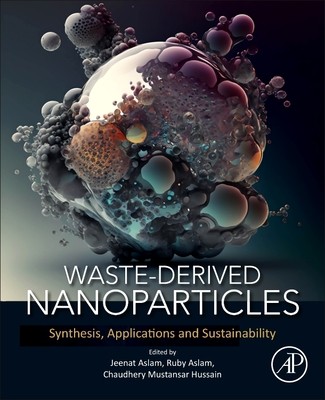
- We will send in 10–14 business days.
- Publisher: Elsevier
- ISBN-10: 0443223378
- ISBN-13: 9780443223372
- Format: 19.1 x 23.5 x 2.2 cm, minkšti viršeliai
- Language: English
- SAVE -10% with code: EXTRA
Waste-Derived Nanoparticles: Synthesis, Applications and Sustainability (e-book) (used book) | bookbook.eu
Reviews
Description
Waste-Derived Nanoparticles: Synthesis, Applications and Sustainability highlights established research and technology on waste-derived nanoparticles, their rapidly emerging aspects, and future research directions. This book will also discuss the involvement of waste-derived nanoparticles in sustainability, pollution, waste, wastewater, environmental impacts and challenges, circular economy, and life cycle assessment. A general review of the processes involved in producing nanoparticles from plastic, electronic, and industrial waste will be provided along with an explanation on important facets of waste identification as a practical input for the treatment and recovery of metal- and carbon-based nanoparticles. Potential conclusions drawn from the many regulatory mechanisms involved in the synthesis of nanoparticles are highlighted. In addition, examples of waste-derived nanoparticles that were used in a proof-of-concept experiment will be used to show how certain technologies could be used to improve the safety and quality of drinking water. Finally, current issues will be explored from the toxicological and life-cycle perspectives that need to be taken into account before waste-derived nanoparticle production is scaled up and put into use.
EXTRA 10 % discount with code: EXTRA
The promotion ends in 21d.15:58:06
The discount code is valid when purchasing from 10 €. Discounts do not stack.
- Publisher: Elsevier
- ISBN-10: 0443223378
- ISBN-13: 9780443223372
- Format: 19.1 x 23.5 x 2.2 cm, minkšti viršeliai
- Language: English English
Waste-Derived Nanoparticles: Synthesis, Applications and Sustainability highlights established research and technology on waste-derived nanoparticles, their rapidly emerging aspects, and future research directions. This book will also discuss the involvement of waste-derived nanoparticles in sustainability, pollution, waste, wastewater, environmental impacts and challenges, circular economy, and life cycle assessment. A general review of the processes involved in producing nanoparticles from plastic, electronic, and industrial waste will be provided along with an explanation on important facets of waste identification as a practical input for the treatment and recovery of metal- and carbon-based nanoparticles. Potential conclusions drawn from the many regulatory mechanisms involved in the synthesis of nanoparticles are highlighted. In addition, examples of waste-derived nanoparticles that were used in a proof-of-concept experiment will be used to show how certain technologies could be used to improve the safety and quality of drinking water. Finally, current issues will be explored from the toxicological and life-cycle perspectives that need to be taken into account before waste-derived nanoparticle production is scaled up and put into use.


Reviews